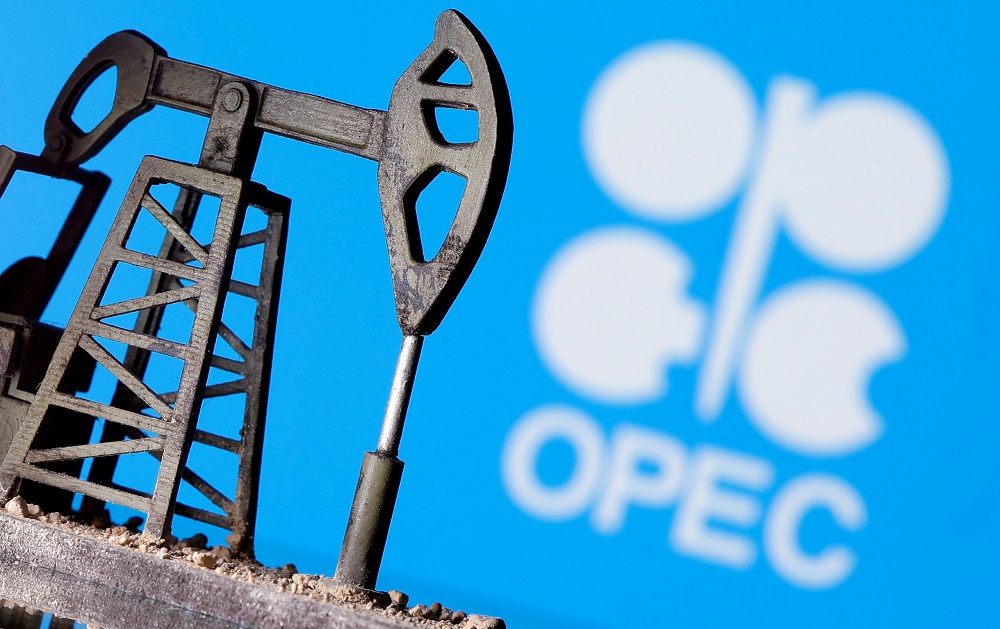BENGALURU, (Reuters) – Global oil prices today posted their biggest plunge since the early pandemic days nearly two years ago, after the United Arab Emirates said the OPEC member would support increasing output into a market in disarray because of supply disruptions caused by sanctions imposed on Russia after it invaded Ukraine.
Brent crude LCOc1 futures fell more than 17% during the session before settling down $16.84, or 13.2%, at $111.14 a barrel, their worst one-day decline since April 21, 2020. U.S. crude CLc1 futures ended $15.44, or 12.5%, lower at $108.70, their worst day since November.
“We favor production increases and will be encouraging OPEC to consider higher production levels,” Ambassador Yousuf Al Otaiba said in a statement tweeted by the UAE Embassy in Washington.
“That’s not nothing. They can probably bring about 800,000 barrels to the market very quickly, even immediately, bringing us one-seventh of the way there in replacing Russian supply,” said Bob Yawger, director of energy futures at Mizuho.
The price plunge was also exacerbated by traders interpreting some reported comments of an Iraqi minister as the country’s willingness to increase output if required. However, state-owned crude marketer SOMO later clarified it sees OPEC+ monthly increases as enough to address any oil shortages.
The Organization of the Petroleum Exporting Countries’ language shifted this week when its Secretary General Mohammed Barkindo said that supply is increasingly lagging behind demand.
Just a week ago, the group and its allies, known as OPEC+, blamed the run up in prices on geopolitics rather than any lack of supply and decided against increasing output any faster than it already was. OPEC+, which includes Russia, has been targeting an increase in output of 400,000 barrels per day every month, and has resisted demands from the United States and other consuming countries to pump more.
Russia is the world’s top exporter of crude and fuel, shipping around 7 million bpd or 7% of global supplies.
Oil prices had already fallen earlier in the session after the International Energy Agency said oil reserves could be tapped further to compensate for disruption to Russian supplies.
“If there’s a need, if our governments decide so, we can bring more oil to the markets, as one part of the response,” said IEA chief Faith Birol.
Birol said the IEA decision last week to release 60 million barrels of oil from strategic reserves was “an initial response.”
His remarks echo words from U.S. State Department Senior Advisor Amos Rothstein at an industry conference on Tuesday, who also suggested more releases could be coming.
U.S. Strategic Petroleum Reserve levels fell last week to their lowest since July 2002, as the Biden administration had already approved releases in November as part of a larger effort to boost the U.S. fuel supply.
The world is working together to tackle surging oil prices and that has put a short-term top for crude, said Edward Moya, senior market analyst at OANDA.
The United States banned oil and gas imports from Russia on Tuesday, while Britain said it would phase out Russian oil imports by the end of the year, which added to disruption in exports caused by a raft of punitive economic sanctions on Russia.
Oil prices had rallied over 30% since Russia’s invasion on Feb. 24, touching a peak over $139 a barrel on Monday, and the Relative Strength Index for Brent, a momentum indicator, suggested the market was due for a selloff.
“There was definitely room for a little bit of a cool down here,” Yawger said. “At these levels, you were going to run out of buyers.”

